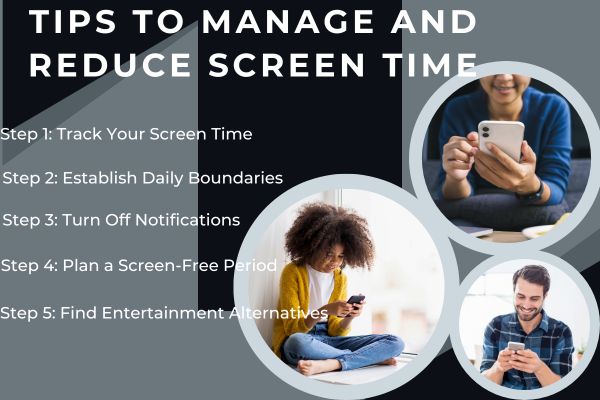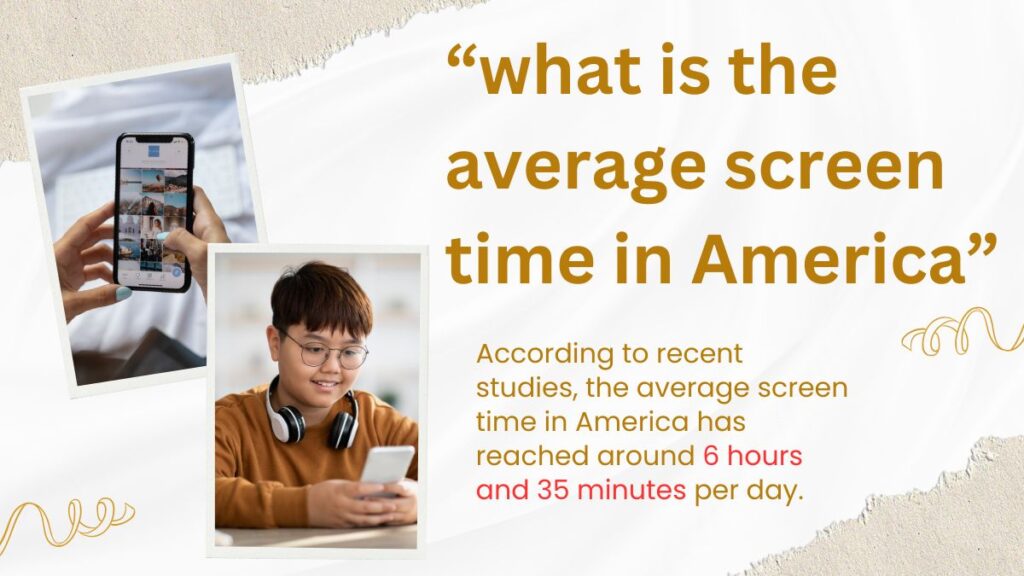As our daily lives become increasingly dependent on digital gadgets, understanding how much time people spend on their phones in America has become crucial, especially for parents facing modern parenting challenges around screen time. Screen usage on mobile devices impacts not only mental health but also sleep quality and productivity, making it essential to monitor our screen habits. This article examines what is the average screen time in America, its effects on daily life, and practical advice for parents and individuals on managing and reducing screen time if necessary.
Let’s dive in to explore how much time Americans, including children and teens, spend on screens daily and how screen time varies by age, state, and lifestyle.
- What is the Average Screen Time in America?
- Why Do Americans Spend So Much Time on Their Phones?
- States with the Highest and Lowest Average Screen Time
- States with the Lowest Average Screen Time
- Why Reducing Screen Time Can Benefit Your Life
- Tips to Manage and Reduce Screen Time
- Conclusion: Embracing Balanced Screen Time
- Frequently Asked Questions (FAQs) about what is the average screen time in America
What is the Average Screen Time in America?
According to recent studies, the average screen time in America has reached around 6 hours and 35 minutes per day. Scrolling through social media, checking emails, texting, streaming videos, and more are all included in this time. However, a number of variables, including age, geography, and individual behaviors, affect this average.
For example, younger generations, such as Gen Z, typically spend more than seven hours a day on their phones, making them the ones with the greatest screen time. The average screen time for elderly folks, on the other hand, is closer to 4 to 5 hours per day.
Why Do Americans Spend So Much Time on Their Phones?

Several factors contribute to the average time spent on phone in America:
Social Media:
Social media sites like Facebook, Instagram, and TikTok are made to keep us interested for long stretches of time.
Entertainment:
Users are drawn in for hours at a time by gaming apps and video streaming services like YouTube and Netflix.
Work:
Many people use their phones for work-related tasks like managing projects, setting up meetings, and responding to emails.
News Consumption:
Many Americans use their phones to keep up with the most recent developments because we have easy access to news.
The increased average screen time in America as a result of each of these activities demonstrates how ingrained our gadgets are in our daily lives.
States with the Highest and Lowest Average Screen Time
Some states report significantly higher screen times than others. Here’s a look at which regions have the highest and lowest averages.
States with the Highest Average Screen Time
Arizona:
Leads the nation with an average screen time of 8 hours and 50 minutes per day.
Washington:
Residents here average around 8 hours and 17 minutes daily.
Kentucky:
People spend about 8 hours and 3 minutes on their phones each day.
Interestingly, Southwestern states like Arizona and New Mexico are at the top when it comes to average time spent on phone in America.
States with the Lowest Average Screen Time
Kansas:
Has the lowest screen time in the U.S., averaging 5 hours and 27 minutes per day.
Maine:
Slightly higher, at 5 hours and 28 minutes per day.
Nebraska:
Comes in at 5 hours and 43 minutes daily.
These differences may be influenced by lifestyle, cultural factors, and access to recreational activities outside of digital devices.
Why Reducing Screen Time Can Benefit Your Life

Numerous detrimental impacts on health and wellbeing have been connected to excessive screen usage. The following are some of the main justifications for thinking about reducing your phone use:
1. Improved Mental Health
According to studies, Americans who spend a lot of time on screens are more likely to experience anxiety and sadness. Cutting back on screen time helps avoid mental health issues that are frequently linked to incessant scrolling and continual digital stimulation.
2. Improved Quality of Sleep
Using a screen right before bed can disrupt your sleep. The generation of melatonin is impacted by the blue light that phones generate, which makes it more difficult to fall asleep. One of the most obvious advantages of cutting less on-screen time is a better night’s sleep.
3. Increased Productivity
Reducing phone use frees up more time for beneficial activities, such as learning, working, or just engaging in hobbies. Reducing phone use can enhance concentration, effectiveness, and general output.
Tips to Manage and Reduce Screen Time

Reducing screen time doesn’t have to be difficult. Here’s a step-by-step guide to help manage your daily phone usage effectively.
Step 1: Track Your Screen Time
There are built-in tools to track screen time on both iOS and Android devices. Use these tools to find out which apps take up the most of your time. A baseline for improvement can be established by knowing how much time you spend on your phone on average in America.
Step 2: Establish Daily Boundaries
Once you’ve determined which apps you use the most, place daily usage caps on them. There are also built-in facilities in many social networking programs, including Facebook and Instagram, that allow you to set time reminders.
Step 3: Turn Off Notifications
The purpose of notifications is to draw attention. You can cut down on pointless distractions and pickups by turning off alerts that aren’t absolutely necessary.
Step 4: Plan a Screen-Free Period
Set aside particular periods of the day to avoid using screens at all. For instance, you may establish a “no phone” policy an hour before bedtime or during meals.
Step 5: Find Entertainment Alternatives
Think about doing something like reading a book, going for a walk, or working on a hobby that don’t need using a screen.
These actions promote a better balance in screen time by lowering reliance on electronic gadgets.
Conclusion: Embracing Balanced Screen Time
Knowing what is the average screen time in America provides us with information about their digital habits. Understanding how screen time affects productivity and health is crucial as it keeps increasing. Even though phones are unquestionably useful devices, a balanced approach to screen time can significantly enhance quality of life.
A healthier, more thoughtful connection with digital gadgets can result from making tiny changes to phone use and substituting other rewarding activities. We hope that this advice has encouraged you to think about doable strategies for controlling screen time so that your daily life might be better and more productive.





